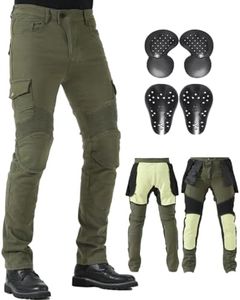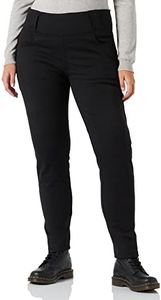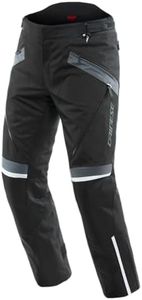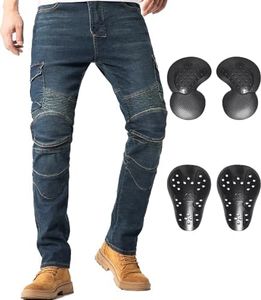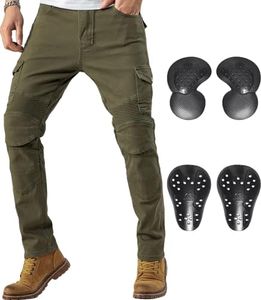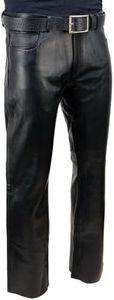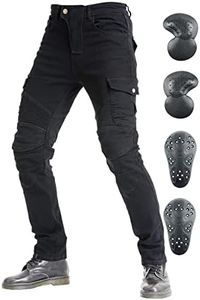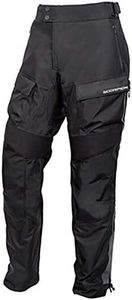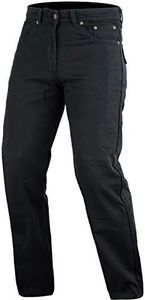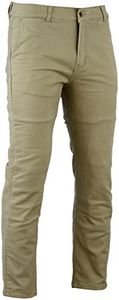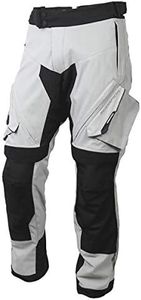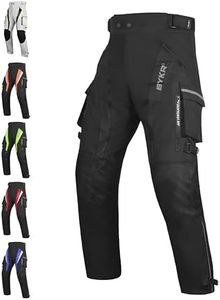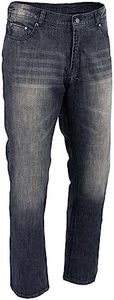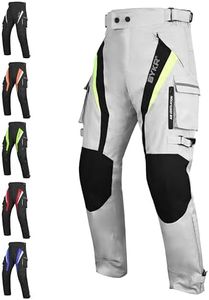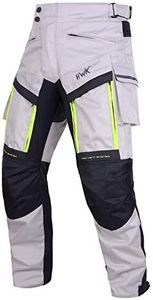We Use CookiesWe use cookies to enhance the security, performance,
functionality and for analytical and promotional activities. By continuing to browse this site you
are agreeing to our privacy policy
10 Best Motorcycle Pants
From leading brands and best sellers available on the web.Buying Guide for the Best Motorcycle Pants
When choosing motorcycle pants, it's important to balance comfort, safety, and functionality. Motorcycle pants serve a dual purpose: they protect you from the elements and, more importantly, provide crucial protection in case of a fall. Since you'll be spending a lot of time wearing them, it's essential to ensure they fit well and meet your specific riding conditions, whether that's everyday commuting, touring, or off-road adventures.MaterialThe material of motorcycle pants largely determines their comfort, durability, and level of protection. Common materials include leather, textile, and denim reinforced with protective fibers. Leather is known for outstanding abrasion resistance but may be warmer and less breathable. Textiles come in various qualities and often provide better ventilation and weather resistance, while reinforced denim offers a more casual look with basic protection. Your riding style and climate should guide your choice — for example, opt for leather or tough textiles for higher speeds or sport riding, while city riders might prefer lighter, more breathable options.
Armor/ProtectionArmor refers to the built-in protective pads located at the knees, hips, and sometimes tailbone areas in motorcycle pants. This protection greatly reduces the risk of injury during a fall. Armor varies by coverage and certification standards, commonly labeled as CE Level 1 or Level 2, with Level 2 providing more impact absorption. If you ride frequently in high-traffic or high-speed situations, opt for pants with comprehensive, certified armor. For short or infrequent rides, basic armor may suffice, but more is always better for safety.
Fit and ComfortFit is about how the pants hug your body and accommodate your movement while riding. Too tight and they restrict movement and could rub uncomfortably; too loose and the armor may shift away from vital areas during an accident. Some pants come with adjustable straps at the waist and knees for customization, as well as stretch panels for better movement. When deciding, think about your riding position and whether you'll wear the pants over regular clothing—touring pants and overpants are typically roomier, while sport pants fit close to the body.
Weather ResistanceWeather resistance covers both waterproofing and ventilation. Some pants use waterproof liners or membranes to keep you dry, while others have removable liners so you can adapt to changing conditions. Ventilated mesh panels offer improved airflow, ideal for warm weather. Think about when and where you'll be riding most—frequent riders in rainy or variable climates should prioritize waterproof options, while those in hot, dry areas may want maximum ventilation.
VisibilityVisibility refers to reflective strips or bright accents on the pants that help other road users see you, especially in low-light or nighttime conditions. The more visible you are, the safer you'll be on the road. Riders who often go out at dawn, dusk, or night, or in urban traffic, should look for pants with good reflective elements, whereas this might be less critical for strictly daytime rural rides.
Closure and AdjustmentsThe way motorcycle pants fasten and adjust can affect both comfort and safety. Look for pants with secure zippers, snaps, or Velcro that won’t easily come undone in a slide. Adjustable waistbands or leg openings make it easier to get a snug fit or accommodate boots. If you frequently change what you wear under your pants or ride in different seasons, versatility in adjustments is helpful.
Pockets and StoragePockets are useful for carrying small items like keys, cards, or a phone. Some pants have waterproof or zippered pockets for added security. Decide how much you tend to carry and whether you need easy access, keeping in mind that bulging pockets can become uncomfortable on longer rides.
